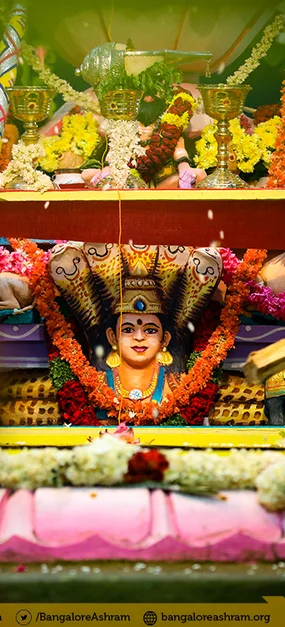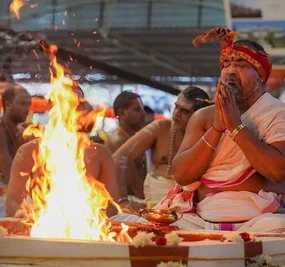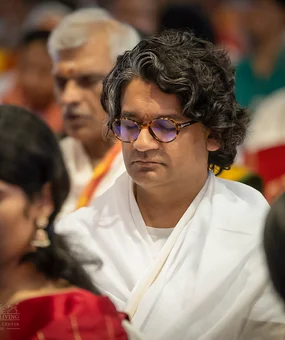Everything we see in this world is made up of energy. From the rays of the sun to the flowing rivers, from buzzing mobile phones to silent pacemakers – energy is present everywhere. As Newton’s law rightly states, energy can neither be created nor destroyed; it can only be converted from one form to another. But what is the source of this energy? What powers all objects, animate and inanimate, to exude energy, every single moment?
According to Hinduism, the Mother Divine or Devi is the source of all energy. Due to this attribute, she is also referred to as Shakti, which literally translates to power or energy. The Mother Divine powers everything in this existence and sustains it. And Navratri is nothing but a means to honor and worship the Devi for our very existence.
Like a child who grows in the mother’s womb for nine months, the nine nights of Navratri offer us a chance to go back to our source to rest and rejuvenate. But here, resting not only implies absence of physical activity but mental activity too. The constant clamor in the mind drains us and doesn’t allow us to experience deep state of rest.
The world is full of energy – energy that can be used to recharge ourselves. To tap into this vast reservoir of energy, we simply need to attune ourselves properly. When the mind is still, it draws energy from its surroundings, and expands. This leads to increased awareness, a calm state of mind, and better productivity. And, spiritual practices such as meditation and fasting are ways to attune to such a state of mind.
While meditation and fasting help calm down the mind and reduce mental chatter, silence is what really enhances the experience. Gurudev Sri Sri Ravi Shankar says that silence not only purifies our speech but also develops our skills. Further, being in silence lets the mind settle down and turn its focus completely inwards, thus letting you dive further inside.
However, silence is not only about refraining from speaking but has a bigger dimension to it. In a nutshell, silence can be divided into three different types:
- When one does not speak to anybody
- When the mind is not interested in the things around but is just focused inwards
- When there is total oneness and contentment
In the first type of silence, we conserve our energy by not speaking out and avoiding use of gestures. In the second type, we go one step further and abstain from indulging in sensory pleasures. Every time we indulge in a sensory pleasure, the mind is active and feeding on the activity. So to rest the mind, sensory pleasures are avoided. Another notch up is the third type of silence where we don’t feel the need for anything and are at peace and contentment with everything around us. This enables the mind to become still and come back to its source.
You think celebration is only in noise, and silence is only mourning. When people are celebrating, they make too much noise and when people are silent, they simply mourn. Somebody died, or someone is in a horrible situation, then they keep silent. Our celebration is totally different, our silence is completely opposite. This is being joyful and yet keeping silence. That is how joy gets its depth, and silence in its true sense becomes a dominating force in our life. So this silence is not that silence of sadness, and the celebration is not just very frivoling and superficial. For celebration to get depth, you need silence. For silence to manifest in its total glory, you need celebration.
~ Gurudev Sri Sri Ravi Shankar
As Navratri draws closer, make a conscious effort to keep silent as much as possible and see the difference for yourself. While the Mother Divine is being honored, give yourself a chance to soak in her real power and take a glimpse at the eternal divine energy of the Devi.
















